The Roman Empire is probably one of the most, if not the most, famous ancient civilizations. It centered in the city of Rome in what is now Italy, but the Romans controlled lands as far as France, Spain, Greece, and parts of North Africa and the Middle East.
The Roman Empire encompasses the founding of the Roman Kingdom during the 8th Century BC, the Roman Republic in the 5th Century BC, until the fall of the Western Roman Empire in the 5th Century AD. It grew from a small town along the Tiber River to military, social, and political greatness.
But apart from being the most successful imperial power, the Romans also have such impeccable taste in food. Surprisingly, their diets do not often differ from the Mediterranean diet, familiar to the modern-day Italian, except for a few surprises.
Breads and grains

Like most ancient civilizations, the Romans built their diet around the cereal they grew, which was made into bread, at least during the early parts. From 123 BC onwards, around 200,000 people get about a 33kg ration of un-milled wheat monthly.
The lower classes made round loaves with emmer and ate it as a meal with a bit of salt. Meanwhile, the upper classes often had bread with milk, olives, eggs, fruits, honey, and cheese. They also dip their bread in wine for a different character.
Over time, wheat replaced emmer as the primary grain, allowing the Romans to make their staple food in different compositions, textures, and tastes. Typically, the darkest bread was consumed by peasants, the lighter one was for the middle class, and white bread was for the elites. Nevertheless, bread and grains remained the standard breakfast fares, particularly for ancient Roman children.
Their Bountiful Crops
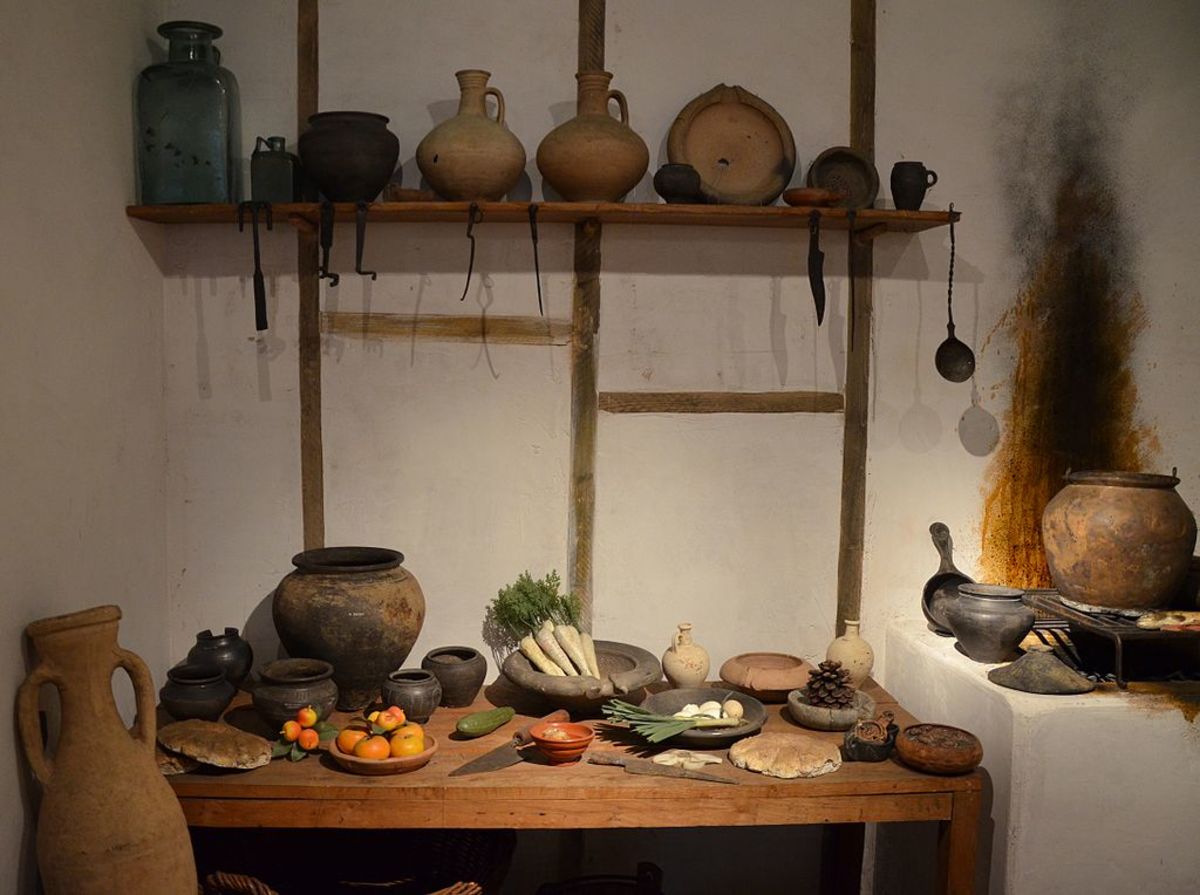
The Romans grew various crops. Aside from wheat, they had olives, peas, beans, onions, lentils, dill, nuts, coriander, legumes, flax seeds, chickpeas, and brassica. The latter is a wild cabbage variety that is particularly helpful in aiding digestion and curing hangovers. Their bountiful harvest forms part of their staple food made into salads and whatnots, usually served with protein over lunch.
Interestingly, the common ingredients in many popular Italian recipes were not locally grown in Rome. For example, they did not have tomatoes, peppers, courgettes, aubergines, and green beans. Instead, they acquired those from the Mainland, Sicily, and Sardinia.
While the poor citizens consumed what was locally cultivated, the elites could afford artichokes, asparagus, and mushrooms. They serve vegetables as sides to their mains, composed of fish and various types of meat.
Fish
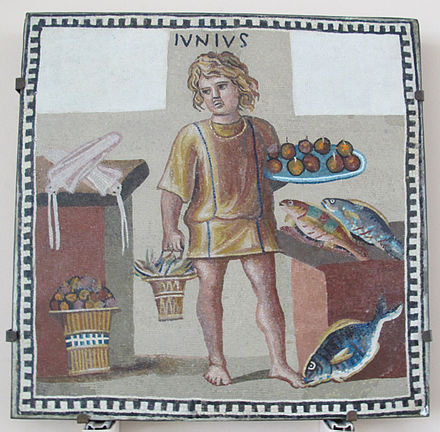
The origin of Ancient Rome was along the Tiber River, the second largest river in Italy. They also have the Mediterranean Sea nearby and the Tyrrhenian Sea on the west. The Romans’ access to the water made them great shipbuilders and fish and seafood eaters, too.
The Romans usually have sardines, sea bass, and tuna. They eat those fresh, but since supply is irregular, they also learned to dry, pickle, smoke, and salt them for preservation. They also used fish in their most favored condiment, garum or fish sauce, made with entrails and fermented in direct sunlight.
More than fish, ancient Romans are known for consuming large quantities of shell food like clams, shrimps, crabs, and lobsters. In addition, they occasionally dine on unusual things like jellyfish, sea urchins, and dolphins. But their favorite treat from the water is undeniably, oysters.
Oysters

Ancient Romans are large consumers of oysters. During the Roman Republic, merchant Sergius Orata who was also a hydraulic engineer, cultivated oysters for money. And boy, did he get rich. He became the first major oyster producer and seller and a known innovator.
Orata smartly took advantage of the significant demand, breeding oysters with relatively new techniques. He was particularly known for using twigs to keep the young from the mature oysters so that they transplanted the young without trouble when it was time to harvest the mature ones. He also controlled the tides by surrounding his artificial oyster beds with dams and channels.
From Orata’s initiative, the Romas dedicated large-scale industries to oyster farming. As a result, they helped supply the demand for tons of oysters in all of Rome at that time.
Snails
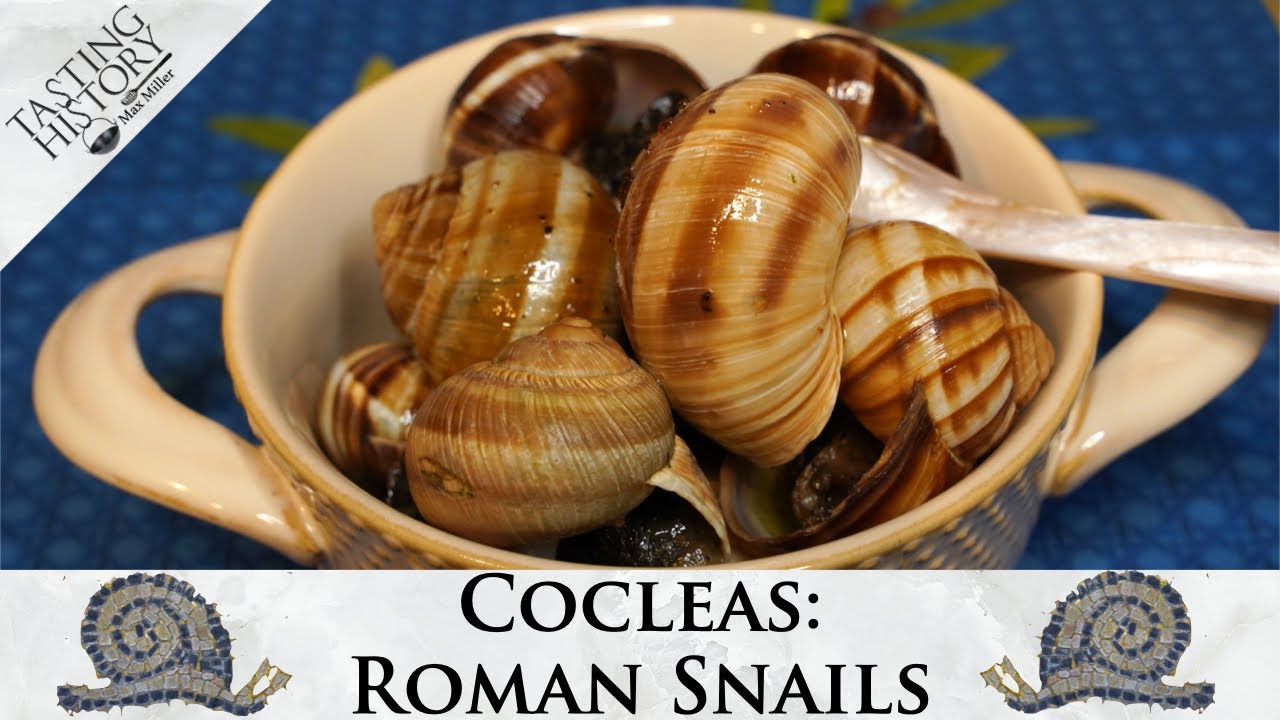
Aside from oyster farming, snail farming is another cornerstone of Roman aquaculture. Ancient Romans cultivated snails as ancient Romans ate many species, especially the elites.
Believe it or not, the Romans introduced Escargot to Europe. The delicacy made with cumin and pepper, well-loved in Spain, traced its roots back to the Roman empire.
The Romans harvested snails and turned them into delicious dishes that fulfilled their gastronomic pleasures. Unfortunately, since they come at a high price, only those in the upper class could afford the meal of snails, mainly served to deliver a fine dining experience.
Meat: Pork, Beef, Lamb, and Dormice
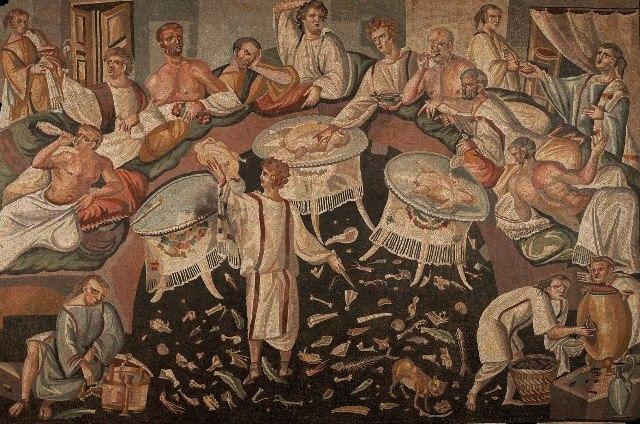
The Romans are large meat eaters. However, only the upper class could afford to consume butcher’s meat. Others, especially the lower class, rarely enjoy meat; they could only afford occasional cuts. Their traditional dinners consist of grains cooked into porridge and vegetables.
Pork, instead of beef, was the primary meat the Romans ate. This is because they value cows for their milk rather than for their meat.
Besides pork, wild boar, rabbit, hare, and lamb are also commonly featured in ancient Roman recipes.
The Romans also consumed plenty of unusual meats. For example, they consider dormice an expensive delicacy, a status symbol, as a person’s ability to serve exotic meats impressed dinner guests. There is also archaeological evidence that showed Romans consumed giraffes and camel meat. They also loved a sow’s womb, kept pristine by spaying and cooked with celery seeds, pepper, dry mint, vinegar, honey, and broth.
Parrot and Peacock, Duck and Goose

Ancient Romans also consumed poultry. But they were fond of fowl rather than chicken. They serve quail, pheasants, peacocks, flamingos, and even parrots. They usually boil fowl meat in vinegar and broth with spices like cumin and pepper, herbs, dates, leeks, and coriander.
Their love for extravagant parties signified the Romans’ affinity for exotic birds and meats. It was very important for the elites to impress their guests with something beyond the ordinary. So coming up with platters of parrot and peacock heads are a must at palace events.
The Romans specifically loved parrots because they could converse and imitate the human voice. However, they also considered peacocks among the first rank dishes for the rich, serving eggs, tongues, and flesh in various forms.
Fruit Platters
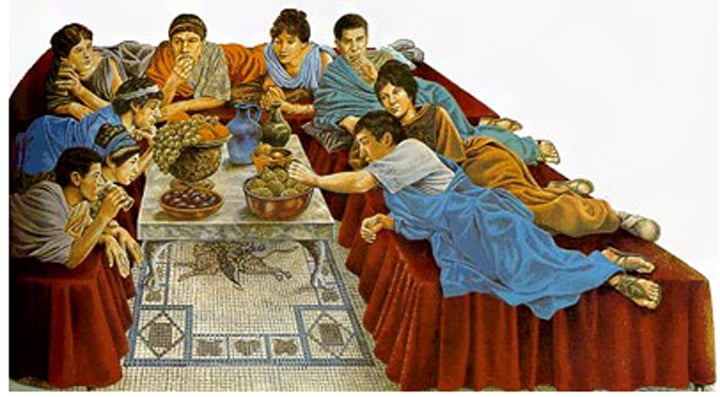
The Romans also grew fruits abundantly. They consumed their produce fresh when they were in season but also preserved and dried some to ensure they would have something during winter.
Their favorite fruits include apples, grapes, figs, pomegranates, and quinces. Ancient Romans also import cherries, dates, oranges, and lemons. They serve fruits in platters, cut up into bite-size pieces with honey as its only sweetener.
The rich and famous Romans did not eat sitting on chairs but reclining on sloping couches around square tables where they placed platters of fruits, meats, cheeses, and other treats. They also eat with bare hands, which the slaves wash throughout the dinner.
Wine

Wine is as essential as water in ancient Roman history. The Romans believed it was a daily necessity for everyone, so citizens enjoyed access to some no matter what their status in the society may be. As a result, everyone had an average of a bottle of wine every day, regardless if they were aristocrats, women, peasants, or slaves.
The Romans often diluted wine in water before consumption since they had high alcohol levels due to a lack of fermentation control. They also enjoyed the beverage in various flavors, from the strong and sweet raisin-flavored passum to the spiced and honeyed conditum. The lower classes’ standard drink is posca, a sour wine mixed with herbs and water. It was the same drink given to Roman soldiers as ration.
Garum or Fish Sauce

For the ancient Romans, garum is the best condiment. They put it in anything and everything as a prime flavoring ingredient.
Garum is essentially a fish sauce made with small fishes or guts and entrails of tuna, sea bass, and mullet, salted and fermented by leaving in the sun for days. It was the best quality paste used in almost every royal recipe. The other local condiments, liquamen and allec, were the remains of when the garum was lifted and primarily used by the middle class and the poor, respectively.
Garum is comparative to the modern culinary world’s soy sauce or Worcestershire sauce. It has a slightly sweet and super savory character in it, making Roman food a lot more interesting.